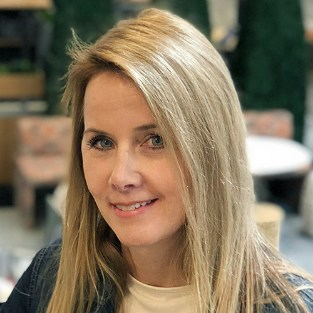

If you think change is happening faster these days or, at least more constantly than ever, it’s not just you. We’re all feeling it.
And while the effects may seem dizzying and even overwhelming at times, that’s ok. There’s a lot to make sense of. And that’s partly why we’re here. We’re going to do our best to synthesize some of the changes shaking up the healthcare industry for the better, and most importantly what it means for healthcare environments and the technology, design, and construction that keep them running.
Recently a colleague and I attended the San Francisco Business Times Future of Healthcare event. The speakers included leaders from Anthem Blue Cross of California, Kaiser Permanente, California Health Care Foundation, and Sutter Health. We all discussed the growing influence of AI, technology and data, health equity, and the cost constraints affecting the world of healthcare and healthcare the environments. Here are some key takeaways.
Embracing Technology and Investing in “Good Change”
Healthcare saw sweeping technological change during the global pandemic. Now the industry is poised to take the next step, to embrace the change as more than a temporary stopgap. The change was, by and large, positive. Patients now have new ways to access healthcare. And more patients have easier access to the services they need – all thanks to a radical leap in the use of data and telemedicine.
The result: higher patient expectations. And while the technology introduced during the pandemic revolutionized the patient experience at the time, it feels disjointed today. Healthcare designers are challenged to figure out new ways to integrate telemedicine usage into everyday workflows. More importantly, how can healthcare organizations use technology to empower patients?
The same goes for Artificial Intelligence. AI’s growing influence needs no added mention here. It’s being over discussed on every corner of the internet. Less talked about, however, is the potential impact of AI on healthcare and healthcare environments. As healthcare organizations become inundated with patient data, AI can (and should) play a significant role. AI can source data and offer more insights into areas like behavioral health, opiate management, and chronic disease. It can also cut waste and continuously learn from added data. The next step for healthcare providers is to integrate AI technology into the patient experience. If done correctly, it could relieve overly taxed hospital staff, increase effectiveness, decrease visit time, and transform areas used for diagnostics.
Building a Stronger Workforce
Burnout continues to be a huge concern in the healthcare industry. But staffing shortages can be addressed by reimagining both the pipeline for talent and the opportunities organizations can offer providers. Beginning with the education system, students could have more opportunities to work within the communities where they train. Consider this: The number of medical schools has not changed significantly over the past 30+ years, but the demand for providers has increased. To address widening personnel and wage gaps, healthcare organizations might consider new pathways to attract providers. Localized residency programs for nurses could add to the talent pool while uncovering new opportunities to increase diversity in the industry. Organizations like Kaiser Permanente for example have created scholarship programs to give tech-minded students a defined path and ladder into the industry.
Addressing Health Equity
The pandemic emphasized long standing but unaddressed health disparities with the higher rates of COVID-19 infection and related deaths among Hispanic, Black, American Indian/Native American, and Pacific Islander populations. This resulted in greater attention by healthcare leaders to a pressing issue. In fact, an Ernst & Young survey of 500 healthcare leaders showed that 34% of respondents developed health equity strategies during the pandemic, within the last three years.
Equity priorities revolve around access, quality, and inclusion. And as healthcare organizations continue to make advances in all three, designers should look to new ways healthcare organizations can build environments that do the same. Can technology, especially remote monitoring, give people in underserved communities better access without going to a physical facility? Can facilities begin to personalize care for diverse groups of people depending on their unique needs? Could providers partner with local community organizations to understand needs and address gaps in the care they provide?
A Brighter Future
Armed with new technology and lessons learned, the healthcare industry can harness the momentum, integrate new technology and data, and place a greater emphasis on equity to provide a better experience for patients.
We’d like to thank the following Future of Healthcare panelists for their time, insights, and expertise during the event. It was a valuable and inspiring learning experience.
Sandra R. Hernández, MD, President & CEO - California Health Care Foundation
Anita Chandrasena, MD, Chief Physician Executive - Dignity Health Northern California Division
David Joyner, Chief Executive Officer - Hill Physicians Medical Group
Dr. David Pryor, M.D., M.P.H., Regional Vice President Medical Director - Anthem Blue Cross of California
Tarek Salaway, MHA, MPH, MA, Sr. VP, Area Manager - Kaiser Permanente
William Isenberg, M.D., Ph.D., Vice President and Chief Medical & Quality Officer - Sutter Health
To learn how we can help you bring more insights, technology, and patient-centered design into your healthcare environment, talk to our dedicated team of experts.